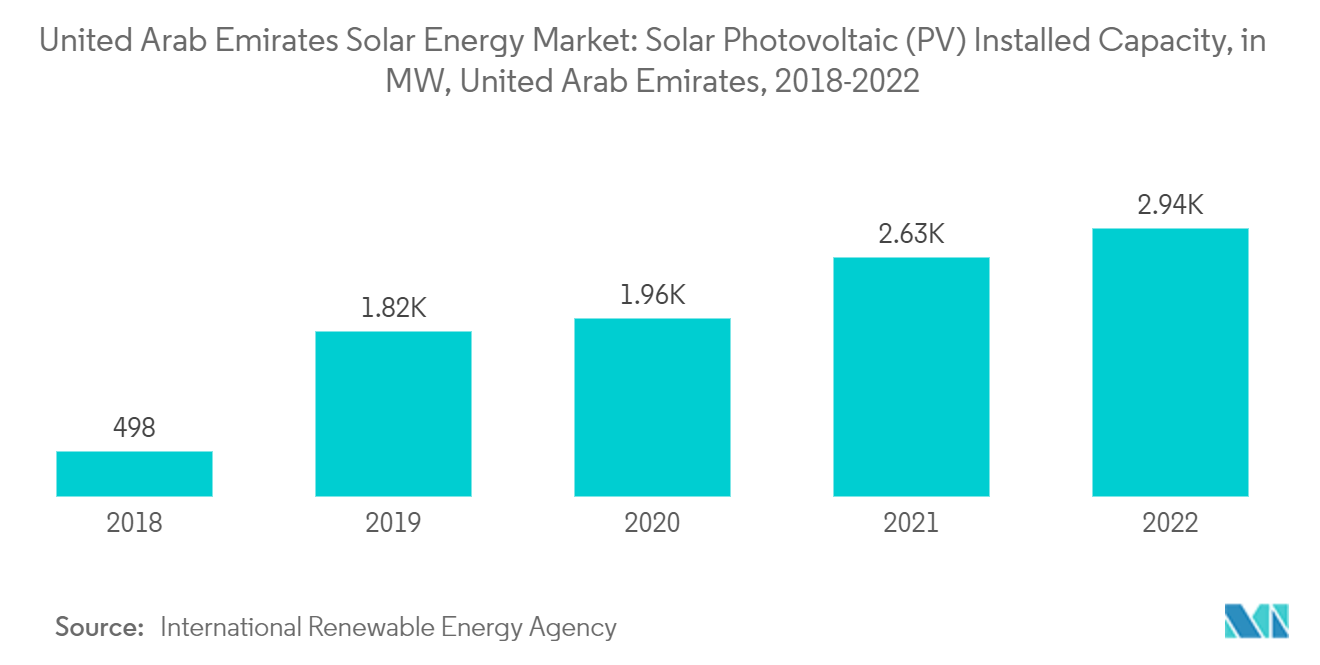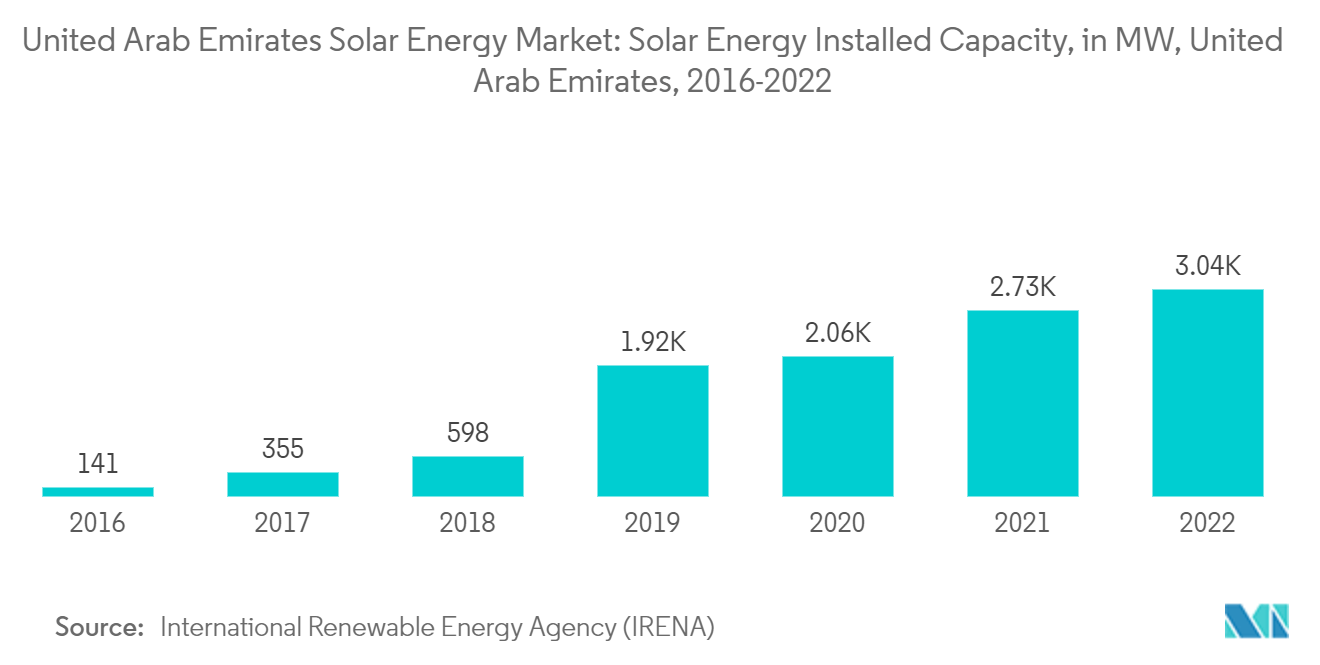Market Trends of United Arab Emirates Solar Energy Industry
Solar Photovoltaic to Dominate the Market
- Solar Photovoltaic (PV) is a technology that generates electricity directly from sunlight via an electronic process that occurs naturally in a semiconductor. The incoming sunlight frees electrons in a semiconductor and can be induced to travel through an electrical circuit, powering electrical devices or sending electricity to the grid.
- Photovoltaic (PV) is the most dominant form of solar energy technology in the United Arab Emirates(UAE), with many different projects being built and more currently under construction. Many local kingdoms and major companies, such as Masdar (Abu Dhabi Future Energy Company), JinkoSolar Holding Co. Ltd, and ACWA Power, formulated their goals and ambitions for solar energy, primarily Solar PV, in the upcoming years.
- This interrelation between government and corporations can be seen in one of the country's most ambitious projects - Al Dhafra solar project, a 2,000 MW photovoltaic (PV) independent power producer (IPP) project. The project is being developed under a public-private partnership (PPP) scheme and is 60%-owned by Abu Dhabi National Energy Company (TAQA) and Masdar, government-owned electricity companies. EDF Renewables and Jinko Power own the remaining 40% share. The project will be installed with solar PV modules based on crystalline bifacial module technology. The solar modules will capture sunlight from both sides for better yield. The project includes a low solar PV tariff of USD 1.35 cents/kWh.
- Such collaborations indicate the direct push by the government to fulfill its mandate of renewable energy creation. To further this cause, the government also put forward policies in this regard. In 2022, United Arab Emirate's installed solar PV capacity is around 2940 MW, increased from 2632 MW in 2021.
- The country launched a renewable energy initiative in 2015 named - 'Dubai Clean Energy Strategy.' It is expected to shape the future of Dubai's energy sector over the years and aims to provide up to 25% by 2030 and 75% by 2050.
- The strategy of the UAE on the solar PV market consists of five main pillars: infrastructure, legislation, funding, building capacities, skills, and creating an environment-friendly electricity mix.
- Among the five pillars, the infrastructure includes endeavors such as the Mohammad bin Rashid Al Maktoum Solar Park, with a planned capacity of 5 GW by 2030 and an investment of around USD 14 billion.
- Therefore, owing to the above points, the photovoltaic segment is expected to dominate the market during the forecast period.

Supportive Government Policies and Clean Energy Tartgets to Drive the Market
- Building on the momentum of the Gulf Cooperation Council (GCC) in diversifying the energy mix in the Middle Eastern region, the United Arab Emirates (UAE) became a pioneer in the area by launching several innovative initiatives, policies, and targets such as 'Energy Strategy 2050'.
- Under Energy Strategy 2050, announced in 2017, the United Arab Emirates set the target to reduce carbon emissions by 70% and increase clean energy usage in the total energy mix from 25% to 50% by 2050, thus saving approximately USD 190 billion by 2050. Furthermore, the United Arab Emirates government aims to invest AED 163 billion by 2050 to counter the growing energy demand.
- Also, some emirates in the United Arab Emirates set different regional clean energy targets. For instance, in 2018, Dubai set 7% clean and renewable energy by 2020 (Target already achieved), increasing to 25% by 2030 and 75% by 2050. In contrast, Ras Al Khaimah (RAK), under its Energy Efficiency and Renewable Strategy 2040, set 30% energy saving targets, 20% water saving, and 20% contribution from renewable by 2040, with a target of 44% renewables by 2050.
- According to International Renewable Energy Agency, in 2022, the total solar energy capacity of the country was around 3040 MW, increased from 2733 MW in 2021.
- In addition, among the seven emirates that make up the United Arab Emirates, most of the solar power activity is concentrated in Abu Dhabi and Dubai, which is expected to account for more than 90% of the total UAE renewable capacity by 2025.
- Besides, Abu Dhabi set a target to meet over 50% of its electricity needs from clean sources (majorly solar energy) by 2030, likely to drive the United Arab Emirates solar energy market during the forecast period.
- Also, Solar leasing and net metering became a game-changer in the United Arab Emirates solar power sector. Under the solar leasing scheme, the building owner does not need to pay an initial investment. It is being covered by solar power service-providing companies and the technical and financial risks associated with setting up the solar plant.
- Therefore, owing to the above points, supportive government policies and clean energy targets are expected to drive the market during the studied period.

